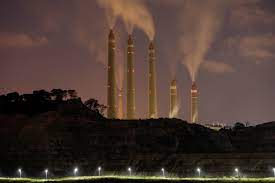
Indonesia’s efforts to decarbonize the country’s power generation sector took a major step on Feb. 22 as the government launched the first phase of mandatory carbon trading for coal-fired power plants.
Officials in the capital of Jakarta have said they want to increase electricity production from renewable energy resources and achieve net-zero carbon emissions by 2060. Coal-fired power generation accounts for more than half of Indonesia’s power output.
The first stage of the carbon trading program will cover 99 power plants, representing 33.6 GW of generation capacity, according to government officials. The plants are connected to power grids owned by state utility Perusahaan Listrik Negara (PLN). The program applies to power plants with at least 100 MW of generation capacity.
Arifin Tasrif, the country’s energy minister, said the program would be available for smaller coal-fired plants, and other fossil fuel-powered facilities, at a later date. Tasrif also said it would be made available to plants not connected to the PLN grid.
Other Generation Resources
Indonesia is exploring other power generation resources, including the use of biomass, geothermal projects, and the construction of nuclear power plants, to decarbonize its power sector.
Mohamad Priharto Dwinugroho, an official with Indonesia’s energy ministry, said about 500,000 metric tons of “CO2 equivalent [are] ready to be traded.” Officials said that figure is an estimate of the excess emissions above a quota given to power plants. The total quota in the program is about 20 million tonnes CO2 equivalent of emissions.
Power plants that emit more carbon than their quota can buy carbon credits as part of the program. The credits would be sold by plants with below-quota emissions, or from renewable energy facilities.
Dwinugroho told local media a market mechanism would set the price for those credits. An energy ministry study earlier pegged the price in a range between $2 and $18 per tonne.
Tasrif at a ceremony announcing the program’s launch said, “Carbon pricing is one of the policies that could increase energy efficiency, reduce dependence on carbon energy [and] imported energy, and can be a source of income for the company and government.”
Trading Could Monetize Operations
Tasrif on Wednesday said adding the carbon-trading program to the country’s power plants could reduce carbon emissions by 36 million tonnes by 2030. Officials said it also provides a way for plant operators to monetize their efforts to reduce carbon emissions at their facilities.
Indonesia last year set a goal of reducing carbon emissions on its own by nearly 32% by 2030, or by more than 43% by that date with international help.
The U.S. and other countries last year announced a $20 billion plan to help Indonesia reduce its dependence on coal-fired power generation.